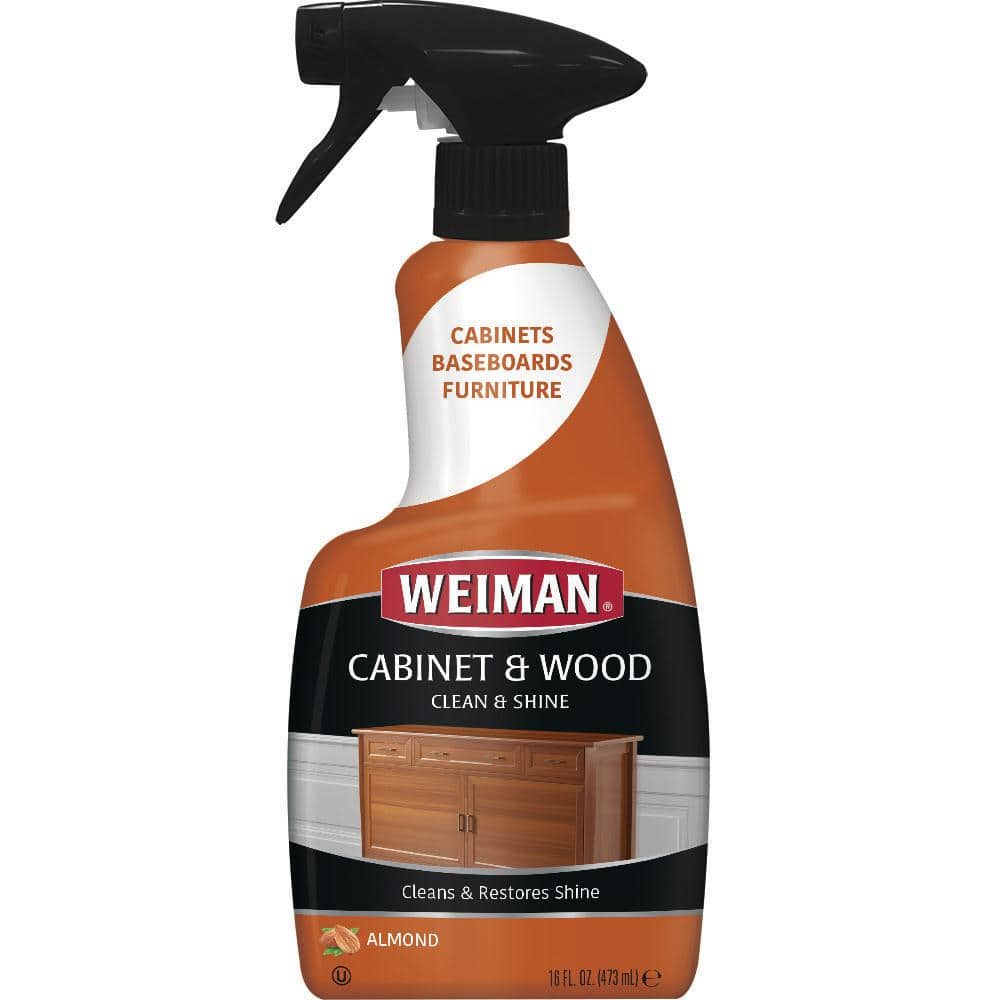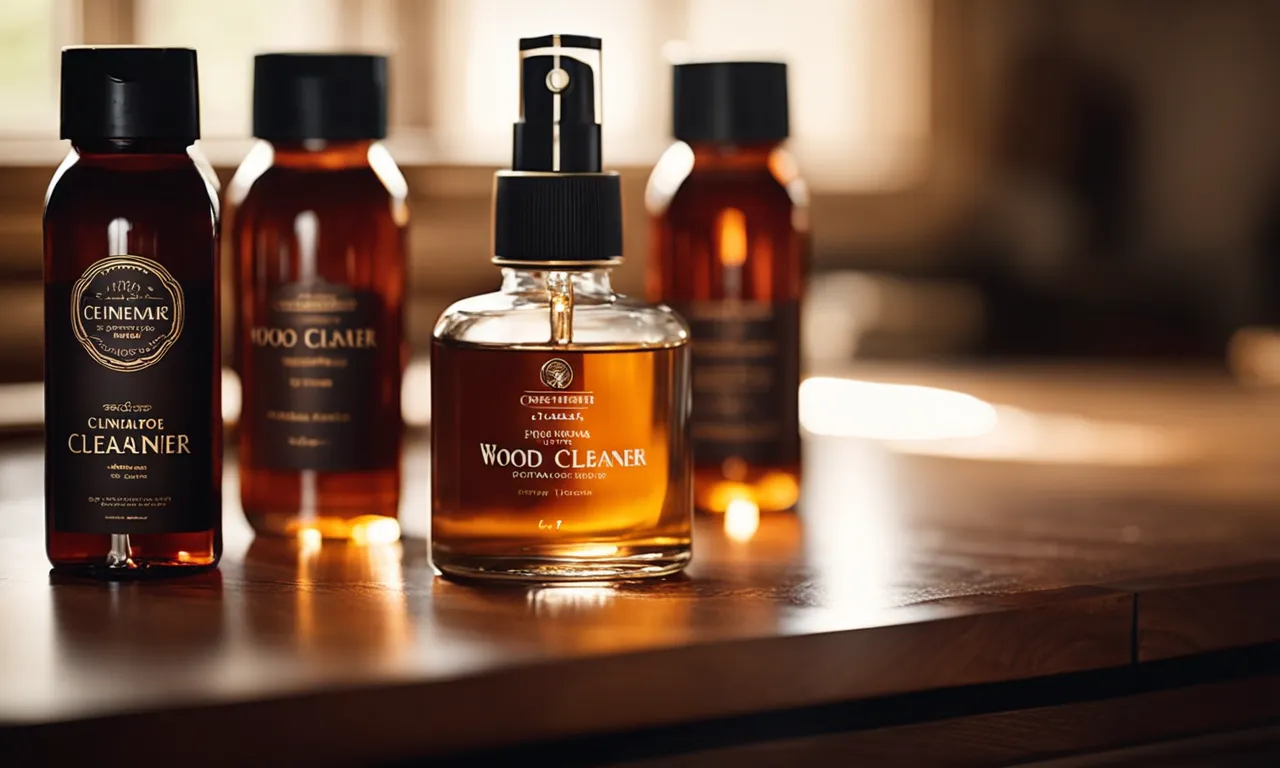Understanding Wood Cabinet Materials

Knowing the type of wood used in your cabinets is crucial for choosing the right cleaner and polish. Each wood has unique characteristics that influence its care requirements. Understanding these differences will help you maintain the beauty and longevity of your cabinets.
Wood Types and Their Characteristics
Different wood types have varying grain patterns, hardness, and durability. These characteristics affect how they react to cleaning and polishing products.
- Oak: Oak is known for its durability, strength, and distinctive grain pattern. It’s a popular choice for cabinets due to its resistance to scratches and dents. Oak cabinets benefit from a regular cleaning routine with a mild cleaner and a protective polish to enhance its natural beauty.
- Maple: Maple is another durable hardwood with a smooth, close-grained texture. It’s often used for cabinets because of its light color and ability to take stains well. Maple can be susceptible to water damage, so it’s essential to use a water-based cleaner and avoid excessive moisture.
- Cherry: Cherry wood is prized for its rich reddish-brown color and beautiful grain patterns. It’s softer than oak or maple, making it more prone to scratches. Cherry cabinets require gentle cleaning with a specialized wood cleaner and a protective polish to prevent damage and maintain its vibrant color.
- Walnut: Walnut is a strong and durable hardwood with a distinctive dark brown color and intricate grain patterns. It’s a popular choice for cabinets due to its elegance and ability to age gracefully. Walnut cabinets require gentle cleaning with a mild cleaner and a protective polish to prevent dulling and enhance its natural beauty.
Recognizing Wood Types
Identifying the type of wood in your cabinets can be done by examining its appearance.
- Grain Pattern: Each wood type has a unique grain pattern. Oak has a distinctive, pronounced grain with a prominent medullary ray. Maple has a smooth, close-grained texture with a subtle grain pattern. Cherry has a distinctive, swirling grain pattern with a reddish-brown hue. Walnut has a rich, dark brown color with a distinctive, intricate grain pattern.
- Color: The color of the wood can also be a clue to its type. Oak ranges from light to dark brown, while maple is typically light brown or creamy white. Cherry has a rich reddish-brown color, and walnut is a dark brown with hints of purple or black.
- Texture: The texture of the wood can also provide clues. Oak has a rough texture with a distinct grain pattern. Maple has a smooth, close-grained texture. Cherry has a smooth texture with a subtle grain pattern. Walnut has a smooth texture with a distinctive, intricate grain pattern.
Essential Cleaning Products for Wood Cabinets

Maintaining your wood cabinets’ beauty and longevity requires the right tools for the job. Just like you wouldn’t use the same brush to paint a wall and a canvas, you need specific products to clean and polish wood. Think of it like a Balinese massage – each oil and herb serves a different purpose to achieve the perfect balance and rejuvenation.
Wood Cabinet Cleaners: A Deeper Dive, Best wood cabinet cleaner and polish
The key to a clean and polished wood cabinet is choosing the right cleaning products. Here’s a breakdown of the essential players in your wood cabinet care routine:
All-Purpose Cleaners
All-purpose cleaners are the everyday heroes of wood cabinet cleaning. They’re designed to tackle everyday dirt, dust, and grime, keeping your cabinets looking fresh and inviting.
“Think of all-purpose cleaners as your trusty Balinese cleaning lady – they take care of the everyday tasks and keep things tidy.”
While effective for general cleaning, all-purpose cleaners aren’t always the best choice for delicate finishes or intricate carvings. They can sometimes leave a residue or dull the shine, so it’s essential to choose a cleaner specifically designed for wood.
Polishes
Polishes are like a Balinese spa treatment for your wood cabinets. They add a layer of protection and shine, enhancing the natural beauty of the wood. Polishes come in various forms, from oil-based to wax-based, each offering unique benefits.
“Polishes are like the final touch of a Balinese ritual, adding a layer of protection and enhancing the natural beauty of the wood.”
Oil-based polishes are known for their deep penetration and ability to nourish the wood, while wax-based polishes offer a more durable protective layer.
Waxes
Waxes are the ultimate protectors for your wood cabinets. They create a hard, durable barrier that resists scratches, water damage, and UV rays. Waxes are ideal for high-traffic areas and frequently used cabinets, offering long-lasting protection.
“Think of waxes as your Balinese warrior guarding your wood cabinets against the elements, protecting them from scratches, water, and the sun’s rays.”
Waxes come in various forms, from paste to liquid, and can be applied by hand or with a machine.
Popular Wood Cabinet Cleaners: A Comparison
| Cleaner | Category | Features | Price | Retailer |
|—|—|—|—|—|
| [Product Name 1] | All-purpose cleaner | Safe for all wood finishes, removes dirt and dust, leaves a clean, fresh scent | $10-$15 | [Amazon Link] |
| [Product Name 2] | Polish | Oil-based formula, nourishes and protects wood, enhances natural shine | $15-$20 | [Home Depot Link] |
| [Product Name 3] | Wax | Paste wax, creates a hard, durable barrier, protects against scratches and water damage | $20-$25 | [Lowe’s Link] |
Polishing and Maintaining Wood Cabinets: Best Wood Cabinet Cleaner And Polish

Polishing your wood cabinets after cleaning is like giving them a spa day, restoring their natural beauty and protecting them from future wear and tear. It’s a process that not only makes them look amazing but also helps preserve their longevity.
Polishing Wood Cabinets
Polishing wood cabinets is a straightforward process that involves applying a polish to enhance the wood’s natural shine and protect it from damage. Here’s a step-by-step guide:
- Prepare the Cabinets: Before you start polishing, make sure your cabinets are clean and dry. This involves removing dust, dirt, and any lingering cleaning solution residue. You can use a soft cloth or a vacuum cleaner with a brush attachment for this step.
- Apply the Polish: Use a high-quality wood polish specifically designed for your cabinet’s finish. Apply the polish sparingly to a soft, clean cloth. Avoid using too much polish, as it can leave behind a sticky residue.
- Buff the Polish: Gently buff the polish into the wood using circular motions. Work in small sections to ensure even coverage. This helps the polish penetrate the wood and create a smooth, glossy finish.
- Remove Excess Polish: Once you’ve applied the polish to all the surfaces, use a clean, dry cloth to remove any excess polish. This step prevents streaks and ensures a uniform shine.
- Let the Polish Dry: Allow the polish to dry completely before using the cabinets. This can take anywhere from 30 minutes to an hour depending on the type of polish used.
Restoring Aged or Neglected Wood Cabinets
Restoring aged or neglected wood cabinets requires a bit more effort, but the results are worth it. Here’s a detailed guide:
- Assess the Damage: Before you begin, carefully inspect the cabinets for any significant damage, such as scratches, dents, or water stains. This will help you determine the best course of action for restoration.
- Clean Thoroughly: Give the cabinets a deep clean using a wood cleaner and a soft cloth. Pay extra attention to any areas with built-up grime or grease.
- Repair Minor Damage: If there are any minor scratches or dents, you can try to repair them using a wood filler or a touch-up pen.
- Apply a Wood Conditioner: After cleaning, apply a wood conditioner to the cabinets. This helps to nourish the wood and restore its natural moisture balance.
- Sand the Cabinets: If the cabinets have a dull finish, you can sand them lightly using fine-grit sandpaper. This will help to remove any imperfections and create a smooth surface for polishing.
- Apply a Finishing Polish: Once the cabinets are clean and prepped, apply a high-quality wood polish. This will help to restore the shine and protect the wood from future damage.
- Maintain Regularly: To keep your cabinets looking their best, polish them regularly. This will help to prevent dust buildup and maintain their shine.
Finding the best wood cabinet cleaner and polish can be a journey, especially when you’re aiming for a certain aesthetic. If you’re going for a serene and calming vibe, perhaps a white and light gray bedroom is your style. In that case, you’ll want a cleaner that enhances the natural wood grain without adding a yellow tint, and a polish that provides a subtle sheen.
After all, the perfect finish for your cabinets should complement the overall look of your space.
Finding the best wood cabinet cleaner and polish can be a real journey, especially when you’re dealing with the unique beauty of unfinished wood. For those who love the natural grain and texture of wood, unfinished wood storage cabinets offer a fantastic blank canvas.
But to maintain their pristine look, you’ll need a cleaner and polish that’s gentle enough to protect the wood’s natural oils while enhancing its shine. So, what’s your go-to solution for keeping those unfinished wood cabinets looking their best?
